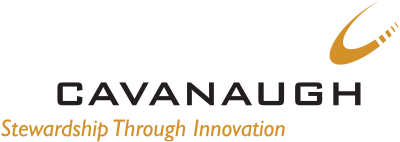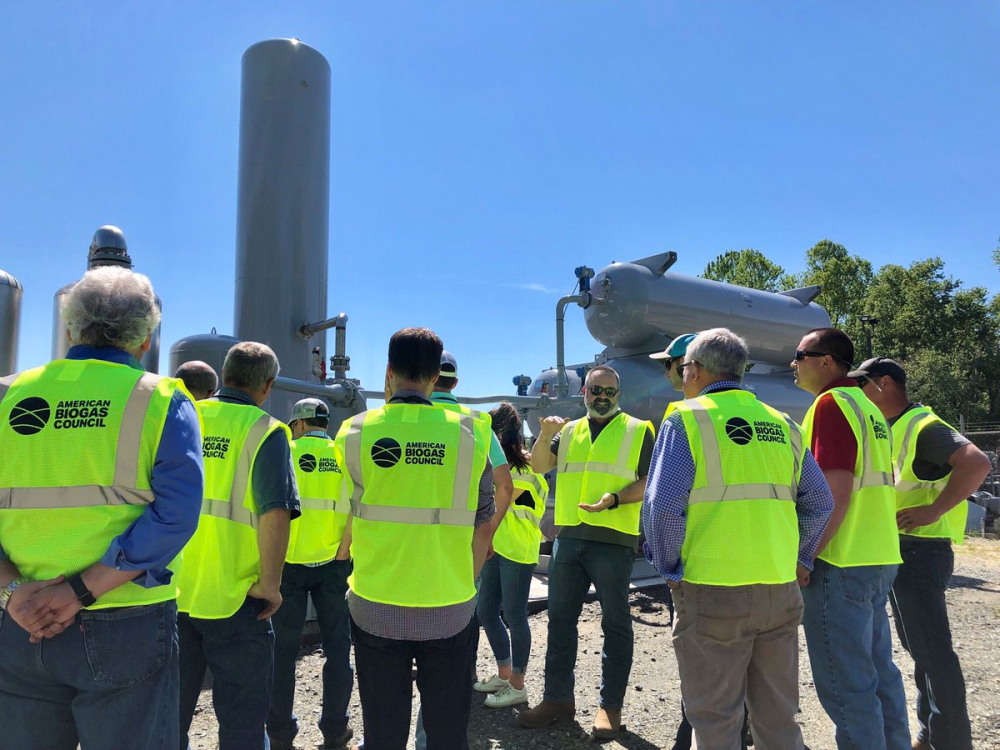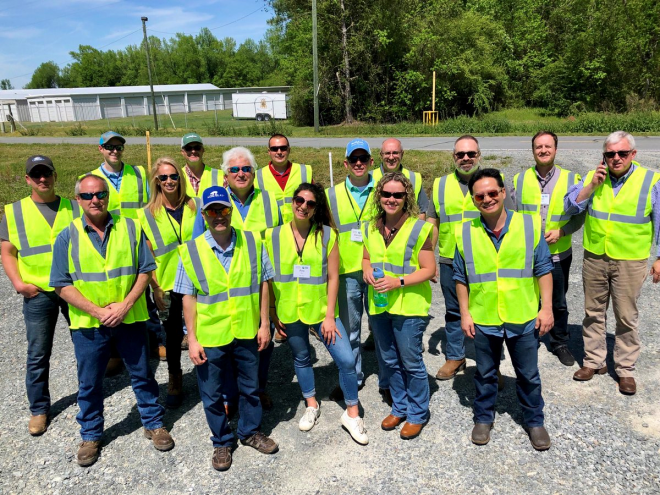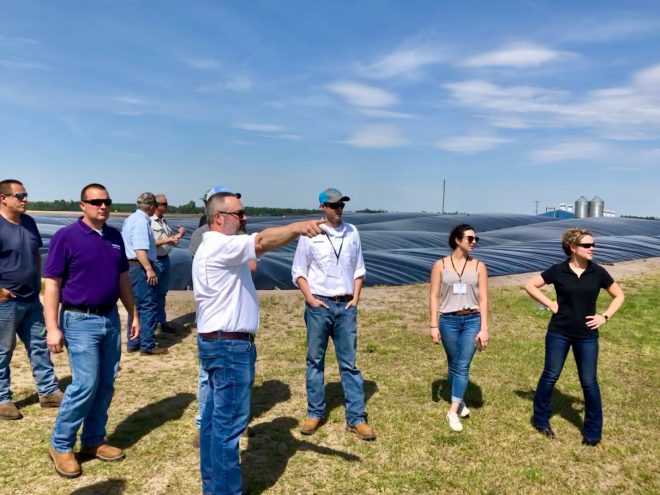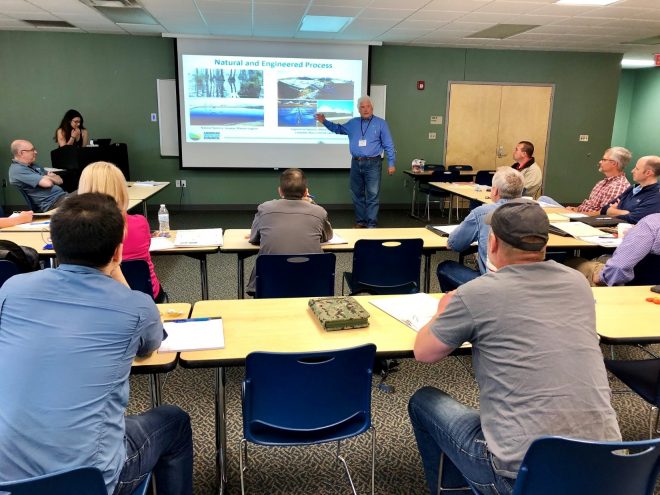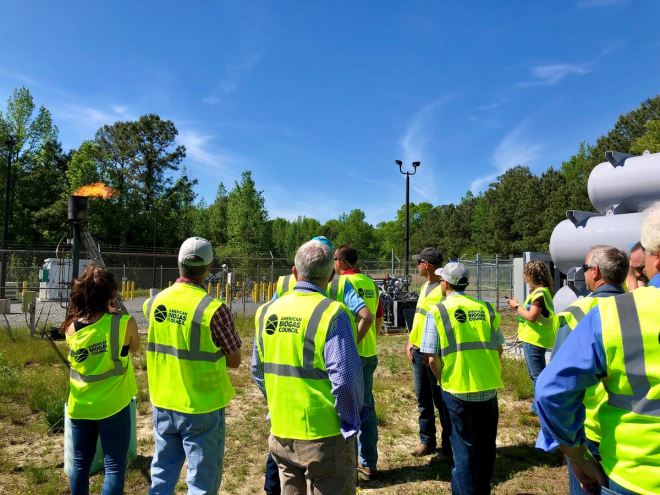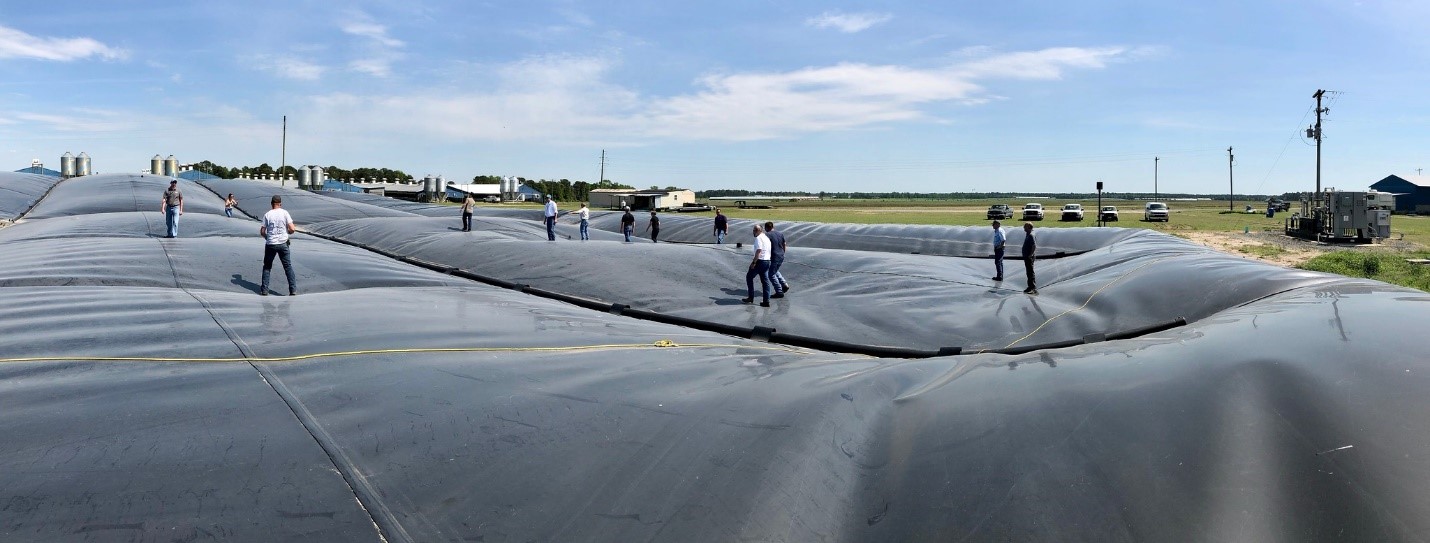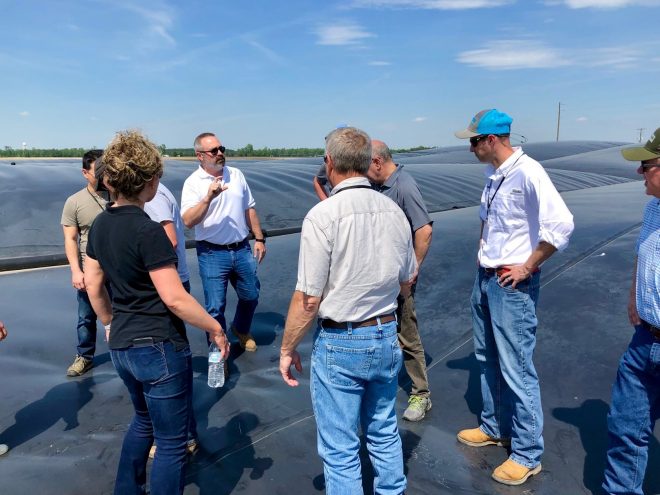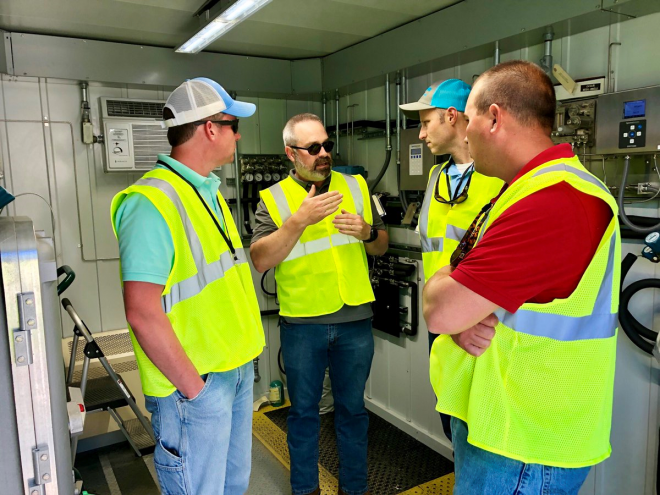Some of the digester operations training was held at the Optima KV project where the students observed the actual anaerobic digesters to get an up close and personal look at the HDPE covers, which capture the wastes from the swine farms and turn it into biogas. Manure and wastes from the animal barns are flushed into the digesters that range in size from 1.7 to 3 million gallons. Through the process of anaerobic digestion, bacteria consume the organic waste, respiring energy-rich biogas. The biogas is captured from the digester at each farm, conditioned to remove particulates and moisture, and piped via low pressure, small diameter pipes to a centralized refinery or gas upgrading system. The students observed the low power compressors at each farm that pull the biogas from beneath the synthetic cover, filter it for particulates and remove moisture through a simple condenser. After this pre-conditioning step, the directed biogas, or Renewable Natural Gas (RNG) is pumped via low pressure, small diameter pipes to a centralized location on a participating farm. At this Gas Upgrading Site, the students visualized the pressurization of the biogas, cleaning and purification and removal of constituents. They experienced first-hand the controls area, which measures the gas, and constituents present, and saw that the methane was almost 99% at the injection point into the natural gas pipeline. By visiting the actual farms, they could see that the farmers are able to continue with their normal operations while bioenergy is being produced.
After the training the American Biogas Council tweeted this: “Did you know that Optima KV’s RNG project was the first to inject gas of any kind conventional or renewable, into the NC pipeline? It was also THE ABC Project of the Year. Our Digester Operator Training Students got intimate with the hog manure> biogas> RNG system. Thx @GusSimmons”

